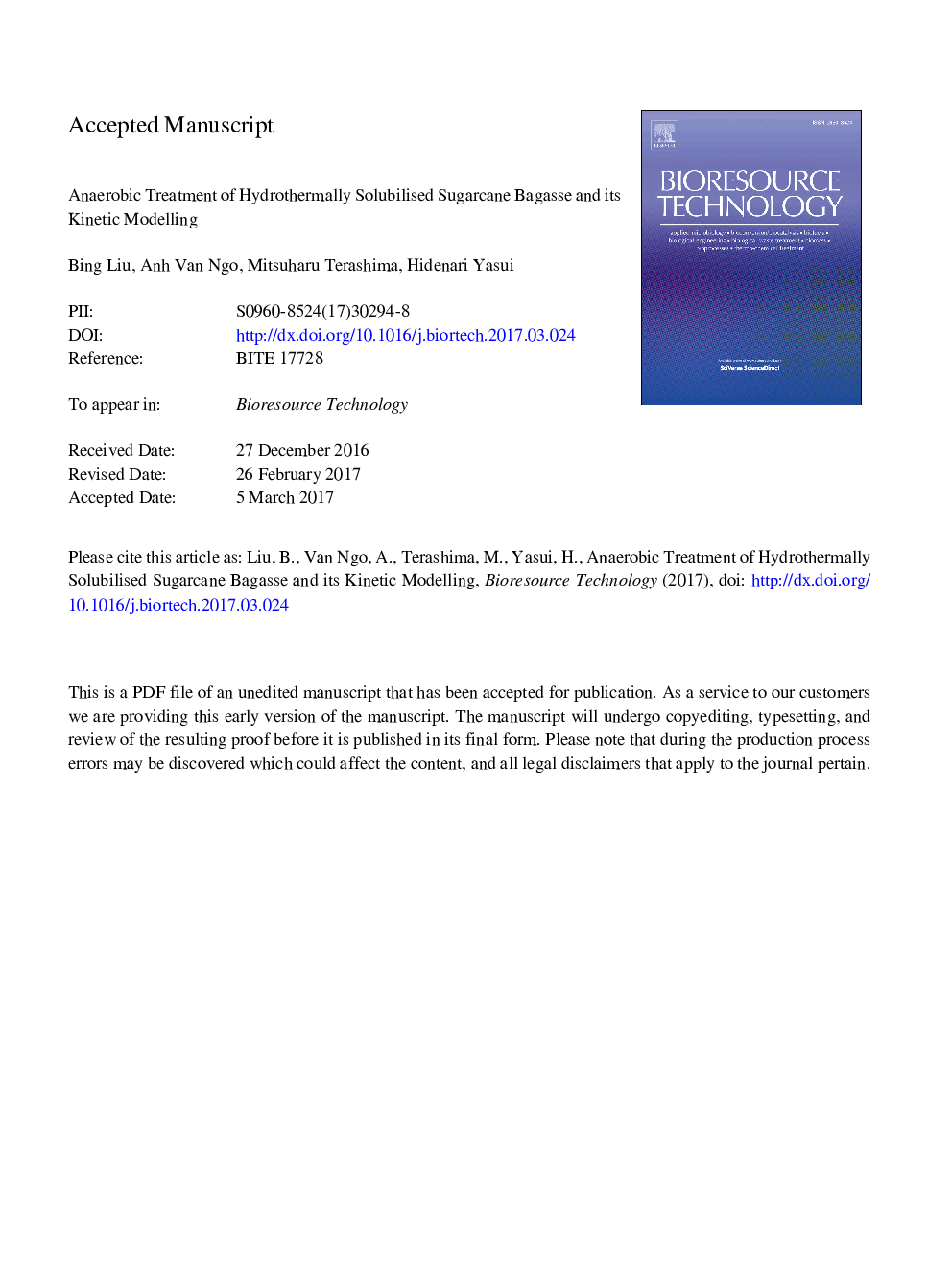| Article ID | Journal | Published Year | Pages | File Type |
|---|---|---|---|---|
| 4997303 | Bioresource Technology | 2017 | 47 Pages |
Abstract
The aim of this study was the evaluation of anaerobic treatment for the soluble organics generated from a steam-explosion pre-treatment of sugarcane bagasse. The batch analysis revealed that about 50% of the organics was possible to be degraded into methane whilst the rest was biologically inert and composed of mostly lignin. Based on the experiment a kinetic model composed of 14 kinds of soluble substances and 5 kinds of anaerobic microorganisms was developed. The model was used to simulate the process performance of a continuous anaerobic bioreactor with MLSS concentration at 2500-15,000Â mg/L. The simulation indicated that the bioreactor could receive the influent until 0.4Â kg-COD/kg-MLSS/d of loading without significant deterioration of methane conversion. By addition of powdered activated carbon, the rest of unbiodegradable soluble organics and dark brown colour in the effluent were removed to 840Â mg-C/L and 760 unit respectively at adsorption of 190Â mg-C/g-PAC and 1200Â unit/g-PAC.
Related Topics
Physical Sciences and Engineering
Chemical Engineering
Process Chemistry and Technology
Authors
Bing Liu, Ngo Van Anh, Mitsuharu Terashima, Hidenari Yasui,
